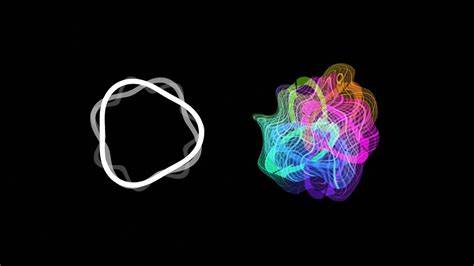String Theory: A Journey into the Fabric of the Universe
Imagine the universe as a symphony of tiny, vibrating strings—this is the essence of string theory, a profound and elegant attempt to unify our understanding of the fundamental forces of nature. String theory posits that the building blocks of reality are not point-like particles, but infinitesimally small strings, each vibrating in its own unique way, shaping everything we perceive and experience.
The history of string theory traces back to the mid-20th century, when physicists began grappling with the profound implications of quantum mechanics and Einstein's theory of general relativity. The groundwork for string theory was laid in the 1960s by physicists like Gabriele Veneziano, who discovered a mathematical model known as the Veneziano amplitude, which provided a framework for describing the interactions of particles.
However, the true birth of string theory as we know it today came in the early 1970s through the work of Leonard Susskind, Holger Bech Nielsen, and Yoichiro Nambu. They independently proposed that instead of point-like particles, the fundamental entities of nature could be tiny, vibrating strings. This revolutionary idea opened up new avenues for reconciling quantum mechanics with general relativity, a task that had eluded physicists for decades.
At its core, string theory suggests that the properties of particles—such as their mass and charge—arise from the vibrations of these strings. Just as different vibrations of a guitar string produce different musical notes, the vibrations of strings in string theory correspond to different particles and forces in the universe. This unified framework aims to merge gravity, electromagnetism, the strong nuclear force, and the weak nuclear force into a single theoretical framework—a grand unified theory (GUT) of everything.

Despite its elegant mathematical structure and potential to resolve long-standing theoretical issues, string theory faces significant challenges. One major hurdle is experiments involving subatomic particles. Strings are hypothesized to be incredibly small, which makes them far beyond the reach of current particle accelerators or observational techniques such as extremely powerful microscopes.
Moreover, string theory exists in several different mathematical formulations, known as string theories or M-theory, each offering a slightly different perspective on the nature of reality. This diversity reflects the ongoing quest to find the correct formulation that describes our universe accurately.
String theory has had a profound impact on theoretical physics, inspiring new mathematical insights and challenging researchers to think differently about the nature of space, time, and matter. It continues to be a vibrant area of research, with physicists exploring its implications for cosmology, black holes, and the fundamental structure of the universe.
Looking ahead, the future of string theory promises continued exploration into its mathematical intricacies and potential experimental tests, albeit challenging ones. Whether or not string theory ultimately proves to be the definitive theory of everything, its development has reshaped our understanding of the cosmos and remains a cornerstone of modern theoretical physics.
In conclusion, string theory stands as a testament to the power of human curiosity and intellect—an ambitious attempt to unravel the deepest mysteries of the universe, one vibrating string at a time.